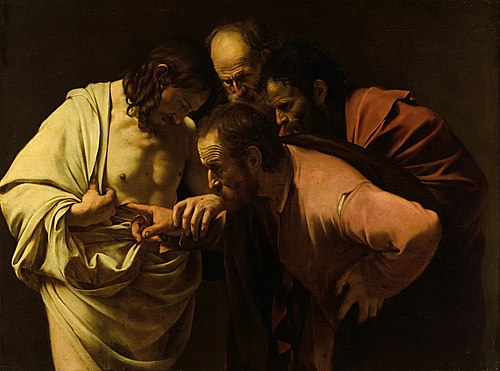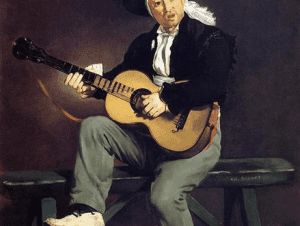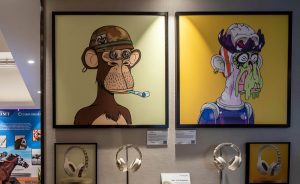Few artists in history could capture a single, heart-stopping moment with the raw, visceral power of Caravaggio. His 1601-1602 masterpiece, The Incredulity of Saint Thomas, is a thunderclap of a painting. It’s a work that drags a divine event down to a gritty, human level, forcing us to confront the physical reality of faith and doubt.
This iconic Baroque painting, housed in the Sanssouci Picture Gallery in Potsdam, Germany, is not a gentle depiction of a biblical story; it’s a confrontational, almost uncomfortable, masterpiece that remains as shocking today as it was over 400 years ago.

The Story: The Doubt of an Apostle 
To understand the painting’s impact, you must know the story from the Gospel of John. After the Resurrection, Jesus appears to his disciples, but one of them, Thomas, is absent. When told that Jesus has risen, Thomas famously declares he will not believe it unless he can physically put his fingers into the nail wounds on Jesus’s hands and his hand into the wound in his side.
A week later, Jesus appears again and confronts Thomas directly, inviting him to touch his wounds and “stop doubting and believe.” Caravaggio’s painting captures this exact, breathtaking climax.
A Masterclass in Baroque Drama 
Caravaggio rejects the idealized, serene depictions of the Renaissance. Instead, he plunges us into a dark, cramped space where four figures are locked in a moment of intense physical and psychological investigation.
Chiaroscuro and Unflinching Realism
This painting is a perfect example of Caravaggio’s signature techniques: chiaroscuro (the dramatic use of light and dark) and tenebrism (where the darkness dominates the image). A harsh, raking light illuminates the scene from an unseen source, highlighting the wrinkled brow of the curious apostles and the pale flesh of Christ. The background is plunged into an inky blackness, eliminating all distractions and focusing our attention entirely on the central action.
The realism is brutal and uncompromising. The apostles are not saintly figures but weathered, balding men with dirt under their fingernails and furrowed brows of concentration. Christ himself is not an ethereal spirit but a physical man, patiently guiding the finger of his doubting follower.
The Shocking Touch
The absolute focal point is the moment of contact. Caravaggio doesn’t shy away from the gruesomeness of the act. Christ actively pulls back the cloth of his tunic, opening the wound in his side. With a mixture of scientific curiosity and hesitant awe, Thomas pushes his finger deep into the flesh. There is a palpable sense of anatomical reality here that was revolutionary. You don’t just see the wound; you feel the act of probing it.
The heads of the three apostles form a tight triangle of intense focus, their gazes converging on the wound. We, the viewers, are placed right there with them, becoming participants in this moment of profound revelation.
The Power of a Single Moment
Caravaggio masterfully conveys a complex narrative in a single, frozen frame. We see Thomas’s initial doubt, his methodical investigation, and the dawning of his belief all at once. The painting isn’t just about proving the Resurrection; it’s about the very nature of faith itself—how it can be born not from blind acceptance, but from a tangible, human encounter with the divine.
Key Facts at a Glance
Artist: Michelangelo Merisi da Caravaggio (1571–1610)
Title: The Incredulity of Saint Thomas
Date: circa 1601–1602
Style: Baroque
Medium: Oil on canvas
Dimensions: 107 cm × 146 cm (42 in × 57 in)
Location: Sanssouci Picture Gallery, Potsdam, Germany
Visiting the Masterpiece
This powerful work is a highlight of the collection at the Sanssouci Picture Gallery in Potsdam, just outside Berlin. To stand before it is to experience the full force of Caravaggio’s revolutionary genius. As always, be sure to check the official museum website for the most current visiting hours and information before planning your trip.








Responses